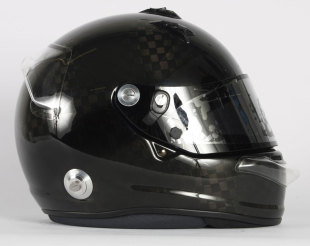

In amongst the acres of press coverage that has followed Michael Schumacher's skiing accident at the end of last year can be found an excellent suggestion from former FIA doctor Gary Hartstein.
As a man who has worked in both motorsport medicine and as an emergency physician, Hartstein has had first-hand experience of treating a range of traumas. But as a long-term FIA employee, he is also well-versed in the Federation's efforts to improve driver safety.
Hartstein's piece - which should be read in its entirety - compares the forces involved in Schumacher's head injury with those of Felipe Massa's 2009 qualifying accident at the Hungarian Grand Prix, and examines why the two incidents had such dramatically different conclusions.
The answer lies in the construction of the helmets both men were wearing - where racing helmets are designed to redistribute the force of an accident, skiing helmets are designed to prevent skull fractures, and have not been designed with potential brain injuries in mind.
Hartstein comes to the obvious conclusion: the FIA should offer to share the results of its helmet design research with the Federations tasked with looking after all forms of skiing, from recreational to competitive. The millions of dollars spent researching helmet safety and testing various compounds for their ability to resist penetration, spread an impact, or deflect force could then be used for the benefit of athletes and hobbyists in a range of other disciplines.
It is an idea whose time has come, as the recent class action lawsuit from former NFL players has shown. American football players who have suffered from the after-effects of regular concussions over the course of their professional lives are finding themselves afflicted with chronic traumatic encephalopathy, a degenerative disease not uncommon in veterans of a range of high-impact professional sports: rugby, hockey, and wrestling, to name but a few.
Following the success of the NFL case, former players for the National Hockey League filed a similar motion in court, while moves are currently afoot to bring about a similar case with NASCAR drivers.
Brain injuries are not restricted to Formula One, yet the FIA is the governing body that has done the most research on how to reduce the impact of high-impact head injuries on its competitors. By willingly sharing the fruits of their labour with any sporting federation who requests it, the FIA have the opportunity to grow their profile on the global stage while also improving conditions for athletes both amateur and professional far outside their remit.
The Federation has already demonstrated its commitment to improving safety standards for their own competitors on four wheels. The Action for Road Safety campaign has provided them with a global platform with which to push for improved conditions for motorists and pedestrians alike. But the FIA is still auto-focussed, as might be expected for a body with 'Automobile' in its name.
Using its recent membership of both the IOC and SportAccord to promote a global campaign to improve helmet safety standards - with bespoke designs targeting the injuries most commonly seen in each sport - could make the FIA acknowledged world leaders in sporting safety while also helping to prevent thousands of other families from living through the tragic experience currently being endured by the Schumachers.
